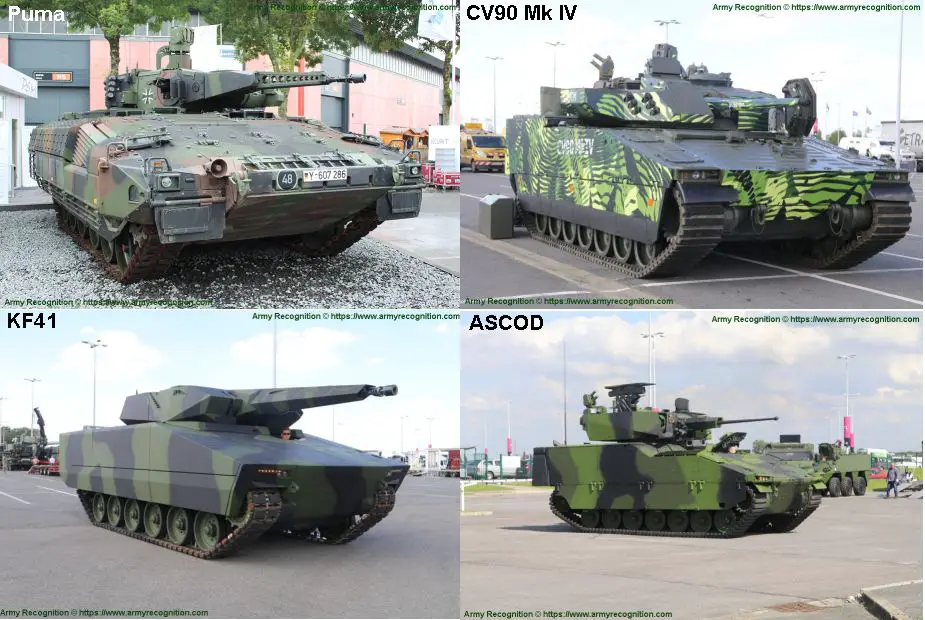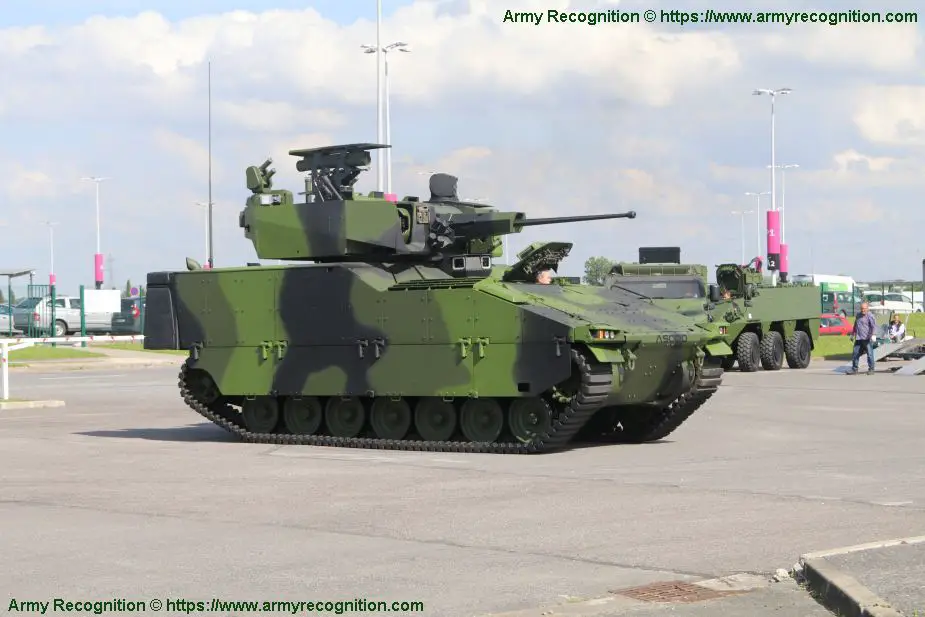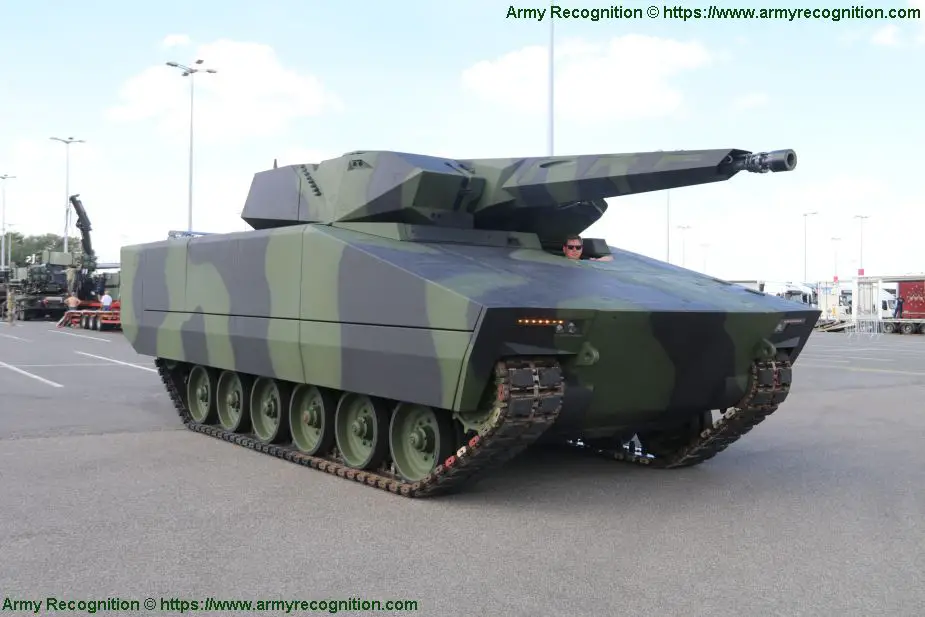Analysis: Four candidates to replace Czech BVP-2 IFV tracked armored
On Monday, December 17, 2018, Czech defense ministry has announced the four candidates shortlisted for one of the biggest defense tender of the Czech Republic to acquire a new tracked armored Infantry Fighting Vehicle (IFV). The Czech Ministry of defense plans to replace old BVP-2 tracked armored IFV, a Soviet-made BMP-2 produced under license in Czech Republic.

The four candidates to replace the Czech army BVP-2 tracked armored IFV Infantry Fighting Vehicle (Picture source Army Recognition)
The GDELS (General Dynamics European Land Systems) company may offer its ASCOD next generation (Austrian Spanish Cooperative Development) heavy tracked platform. The BAE Systems group is expected to promote the latest generation of CV90 tracked IFV, the CV90 Mk IV, developed by the BAE Hagglunds company while German Companies will offer the Puma from PSM Projekt System & Management and the KF31 / KF41 from Rheinmetall Landsysteme.
The BVP-2 is a Soviet-made BMP-2 tracked IFV manufactured under license in Czech Republic. The BMP-2 was first seen in public during a military parade held in Red Square, Moscow, in November 1982. The vehicle was deployed for combat operations with the Russian Army in Afghanistan and the Iraqi Army in the 1990-91.
Armament of the BVP-2 is similar to the Soviet-made BMP-2, which consists of one 30 mm cannon 2A42 and one 7.62 mm PKT machine gun mounted to the left of the main armament. It has a two-man all-welded steel turret with the commander seated on the right and the gunner on the left. It carries six infantrymen who sit down either side of the vehicle back-to-back.

GDELS ASCOD next generation IFV (Picture source Army Recognition)
The ASCOD new generation is a modern tracked armoured vehicle designed and developed jointly by the companies Santa Bárbara Sistemas from Spain and Steyr from Austria which are now business units of General Dynamics European Land Systems. Survivability, mobility and reliability are the main features of this modular medium weight armoured vehicle.
The ASCOD GDELS new generation uses a common tracked base platform that can be configured for different types of missions. It can be configured in APC (Armored Personnel Carrier), IFV (Infantry Fighting Vehicle) and many other variants.
In June 2018 during Eurosatory defense exhibition, GDELS has presented an IFV version of the ASCOD fitted with an unmanned turret including a 30mm dual feed cannon, 7.62mm co-axial MG, a pod of two anti-tank guided missiles (ATGM), a Hard Kill Active Defence System and an advanced 360 degree sight system for increased situational awareness.

BAE Systems CV 90 Mk IV (Picture source Army Recognition)
At the beginning of the year 2018, BAE Systems has launched a new modernized version of its CV90 tracked armored IFV, the CV90 Mk IV, a fifth generation combat-proven Infantry Fighting Vehicle (IFV) combining improved battlefield speeds and handling with an upgraded Electronic Architecture to support future growth capabilities.
The CV90 MK IV is fitted with the D series modular turret which can be armed with different types of armament, from 30/40-mm and 35/50-mm automatic cannons up to 120-mm smooth-bore tank cannon. Second armament can include Spike LR or other anti-tank guided missile launchers and a 7.62 mm coaxial machine gun. For the CV 90 Mk IV the coaxial machine gun is mounted to an independent pod located on the left side of the turret.
The design of the CV90 Mk IV is very similar to the original CV 90 with the driver seated front left, the power pack to his right, the turret in the centre and the troop's compartment at the rear of the hull. The CV90 Mk IV is of all-welded steel armor construction. The CV90 basic armor provides all-round protection against 14.5 mm armor-piercing rounds. Armor protection over the frontal arc is classified, but all models from CV90 and later are said to be protected against 30 mm APFSDS (Armor-piercing fin-stabilized discarding sabot) ammunition.

Rheinmetall LandDefense KF41 IFV (Picture Army Recognition)
The KF31 / KF41 also nicknamed Lynx, is a family a tracked armored vehicle designed and developed by the German Company Rheinmetall LandSysteme. The Lynx KF31 infantry fighting vehicle was presented for the first time by Rheinmetall at Eurosatory defense exhibition in June 2016, while the KF41 was launched during the edition 2018 of Eurosatory.
The Lynx comes in two versions: the KF31 and KF41 (KF stands for "Kettenfahrzeug", or tracked vehicle in German). Weighing up to 38 tones, Lynx KF31 can seat 3+6 soldiers. Lynx KF41 is slightly larger and can carry 3+8 soldiers. The two Lynx vehicles can be configured for various roles as IFV (Infantry Fighting Vehicle), Command and Control vehicle, armoured reconnaissance, ARV Armored Recovery vehicle an ambulance.
A high degree of commonality in parts and components is another prominent feature of the Lynx family of vehicles. This simplifies logistic support and has a positive impact on training. Furthermore, customized service support is available worldwide – ranging from training and logistics to in-theatre repairs and technology transfer.
The KF41 IFV (Infantry Fighting Vehicle) variant was presented at Eurosatory 2018 with A Lance 2.0 turret, the next generation of the in-service Lance family and has been developed to improve its suitability for an IFV. The turret is armed with the new Wotan 35 electrically driven 35mm cannon that fires Rheinmetall’s proven and in-service 35x228mm ammunition family. The WOTAN 35 is the latest member of the WOTAN cannon family and, due to its larger caliber, delivers longer range and deeper penetration than 30mm cannons.

German Puma IFV (Picture source Army Recognition)
The Puma is the latest generation of IFV which is now in service with the German army. Mass production began on 6 July 2009 under a joint program of German Companies Krauss-Maffei Wegmann and Rheinmetall Landsysteme, who created a joint venture in the form of Projekt System Management GmbH (PSM).
The Puma, while externally not very different from modern IFVs, incorporates a number of advances and state-of-the-art technologies. It can incorporate many different types of armour, to offer three protection classes which are wholly or partly interchangeable. Protection class A is the basic vehicle, at 31.5 metric tons combat-ready weight air transportable in the A400M. Protection class C consists of two large side panels that cover almost the whole flanks of the vehicle and act as skirts to the tracks, a near-complete turret cover and armor plates for most of the vehicle's roof. The side panels are a mix of composite and spaced armor. It adds about 9 metric tons to the gross weight. Originally, there was also a protection class B designed for transport by rail. However, it became obvious that class C lies within the weight and dimension limits for train/ship transportation, thus class B was scrapped.
The Puma is fitted with a remotely controlled weapon station, developed by Kraus-Maffei Wegmann, which is armed with a dual feed Mauser 30mm MK 30-2 cannon. Rheinmetall is responsible for the integration of the Mauser cannon and the ammunition handling system. A coaxial mounted MG 4 is used as a secondary armament laid and operated analogue to the main weapon. Back of the turret is mounted 8 electric smoke discharger.


























